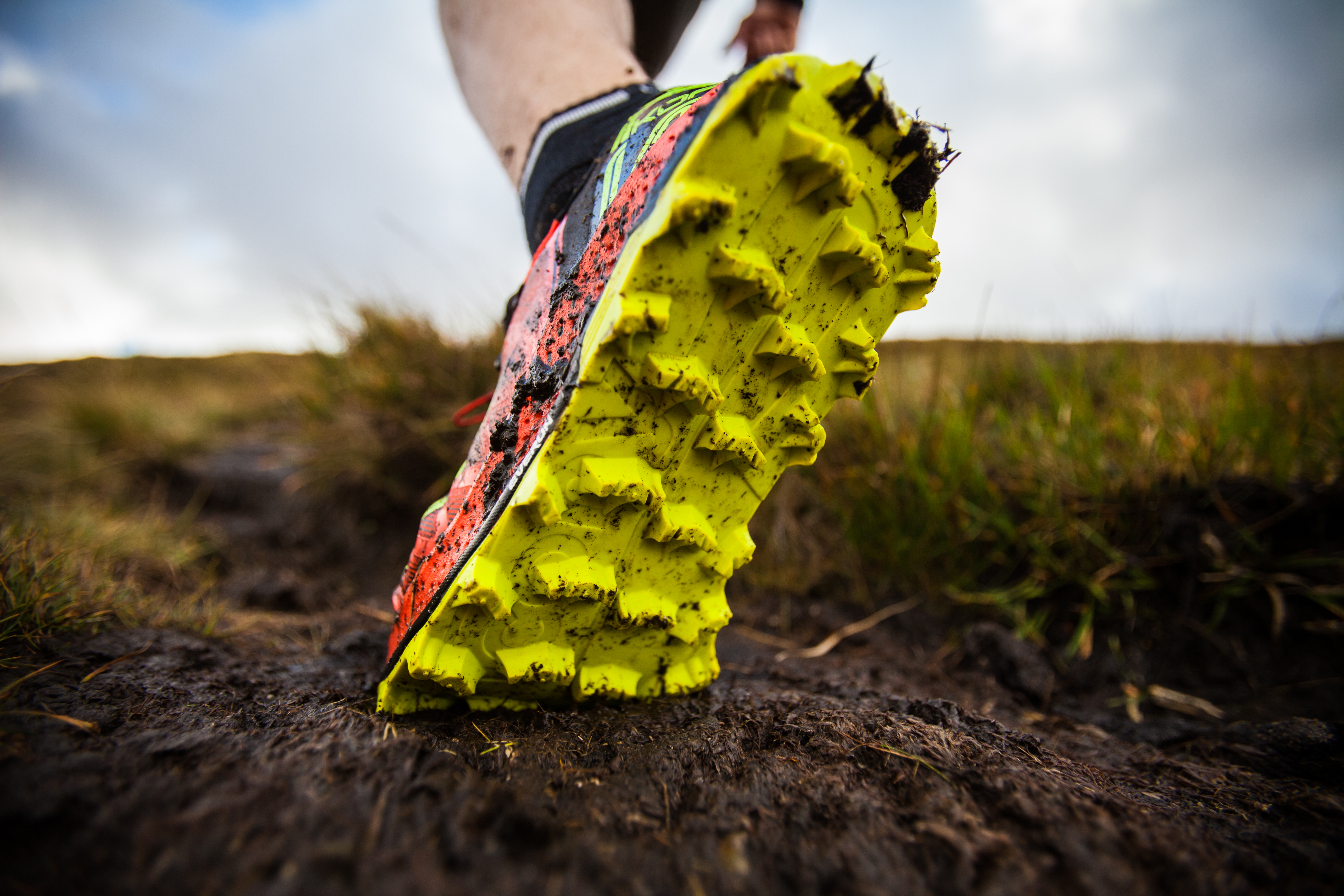
The popularity of off road and trail running is on the rise, but why is this? Should you consider swapping your roadies for some trail shoes yourself? Below are our top tips on why you should get into trail running this winter.
Turn to trail
Green and pleasant land
Running off road, in the countryside, woods and mountains puts you in a beautiful environment with greater variety. Research into sports psychology has shown that having this external stimulus can really help runners to relax and perform better.
Spread the load
With each foot strike on a road or tarmac surface you’re generally hitting the same muscles with the same foot strike over and over. Getting off road on mixed terrain surfaces will mean your gait and foot strike is slightly different each stride meaning you will spread the impact over a great range of muscles, reducing your risk of injury. Get yourself a pair of shoes that will give you that extra grip and flexibility you need such as the Saucony Peregrine 7, and you’re good to go.
Strong & stable
By mixing firm hard pack trails with mud, flat routes and hills, you help to ensure your body works a much greater range of muscle groups, not just in your legs but also the stabilizing muscles in your core, feet and ankles. Simply put, hitting the trails will leave you a stronger runner whether racing off road or on road.
Getting technical
A technical running route is one which has a lot of mixed terrain and even sometimes navigation – this requires you to stay sharp and alert as you might be hopping from rock to rock or watching out for steeper descents or tree roots. This alertness helps develop your sense of balance and movement (or proprioception as it’s known) as well as developing faster foot strike and leg turn over.
Clean air
Recent research has shown that running in polluted environments can increase your risk of cardiovascular disease. Whilst many runners don’t have a choice day to day, anytime you can get out into the cleaner air of open countryside, or even just in some of the big city parks your lungs will thank you as a result.
Pressure free
In a world of data and metrics, Strava and social media I am increasingly finding runners stressed with performance anxiety before they even leave the door. GPS data can leave road runners fixed purely on pace and judging themselves after every run. As your pace won’t mean a lot running off road, and might vary significantly over different routes and conditions hitting the trails can be great at just getting your to focus on your heart rate, perceived effort and ‘feel’.
How to do it
Safe and secure
Stick to planned and marked routes and public rights of way, always keep a phone with your and let someone at home know which route you plan to run and for how long. A great way to start would be to follow a marked hiking or running trail.
Get the gear
Your current road or gym shoes are unlikely to cut it on the trails, particularly on hilly, muddy or rocky terrain. Ensure you have the right footwear to keep you secure with the right grip for the right surface. Saucony offer a fantastic range of trail shoes from the KOA TR which will allow you to run on both road and hard pack trails with ease through to the KOA ST or Peregrine 7 offering a more aggressive sole for muddy and wet routes.
Transition gradually
Give yourself time to develop your off-road experience. Don’t head straight out and aim to summit Snowdon or Ben Nevis straight away. Develop your confidence and experience running on gently rolling grass and marked trail routes using a hybrid shoe such as the KOA TR. As you develop more experience you can get more ambitious to target more technical routes or harder terrains and try out the more aggressive KOA ST or the Xodus ISO 2 for longer runs over mixed surfaces.
Time and effort
It’s time to relax about the GPS. Run toe time and effort, not distance and pace. Fartlek running can be a great option when running and training on the trails. This is a much more relaxed approach to including harder efforts into your runs. A great start would be a 40-50 minute run to include 8 sets of 2 minute strong, 1 minute easy, 1 minute strong, 1 minute easy. Keep the paces changing according to the terrain – letting your heart rate guide your intensity.
Trail races
Look to enter some trail races that are focused towards the newer trail runner. There are loads out there now from Cancer Research’s ‘Pretty Muddy’ series to the Lakeland Trail Series in Cumbria. This will see you meeting other trail runners form beginner to experienced and you’ll pick up loads of tips as well as learning new routes.






